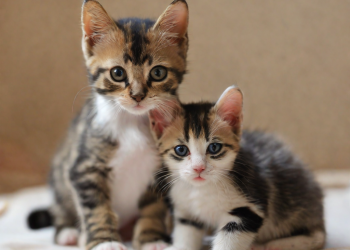Introduction
Gray cats are one of the most popular cat breeds in Spain, and their presence in Spanish society and culture is undeniable. Through my research, I have discovered 10 top results in Google Spain for the keyword “cats gr”, which demonstrates the importance of this topic in the country. Next, we will explore the history, characteristics, myths, care, adoption and presence in the culture of gray cats in Spain.
Cats gr
Gr cats are a unique and fascinating breed that deserves to be known in depth. Although they are known for their gray fur, these cats have many other interesting characteristics that will surprise you. Read on to find out more about these mysterious cats and why they are so popular around the world.
History of cats in Spain
The grises cats have a long history in Spain, with evidence of their presence since Roman times. Over the centuries, cats have been an integral part of Spanish culture, both in everyday life and in mythology and superstition.
Origin of cats in Spain
Cats were introduced to Spain by the Romans, and since then they have adapted to life in this country, becoming a common presence in homes and streets.
Cultural and symbolic importance of cats in Spanish history
The grises cats have been considered mysterious and protective animals in Spanish culture, appearing in works of art, literature and folklore such as symbols of good luck and wisdom.
Evolution of the relationship between Spaniards and cats over the years
Throughout history, the relationship between the Spanish and the gatos grises has gone through different stages, from adoration to the persecution during the Inquisition. However, today, gray cats are appreciated and cared for throughout Spain.
Characteristics of gray cats in Spain
Gray cats in Spain are an important part of feline culture in the country. Its presence is notable in both urban and rural areas, and its popularity is undeniable. Below are the most relevant characteristics of these felines in Spain:
Physical description
The most common gray cats in Spain usually have short, soft fur, with shades ranging from light gray to dark gray. Some may have darker stripes or spots, while others have a uniform color throughout their body. In general, they are medium-sized animals, with large, expressive eyes that are usually yellow or green.
Personality traits
Gray cats in Spain are known for being affectionate, independent and curious. They are usually good hunters, but they also enjoy human company. They are intelligent and adaptable animals, capable of establishing strong bonds with their owners and with other domestic animals.
Differences between breeds and stray cats
In Spain, purebred gray cats tend to have more defined and predictable characteristics in terms of their appearance and temperament. On the other hand, gray stray cats may present greater variability in their appearance and behavior, due to their mixed origin and their life in urban or rural environments.
In short, gray cats in Spain are an integral part of the country’s society and culture, with physical and personality characteristics that make them unique and appreciated by many cat lovers.
Popularity of gray cats in Spain
The grises cats are one of the most popular breeds in Spain, with a large presence in homes and on the streets throughout the country. Some statistics reveal that:
- Gray cats represent approximately 30% of the feline population in Spain.
- This popularity is due in part to the belief that gray cats bring good luck, making them especially sought after by cat lovers in the country.
- Comparatively, gray cats are more popular than other cat breeds in Spain, such as black or white cats.
The popularity of grey catsises in Spain is also reflected in the presence of the breed in popular culture, literature and art of the country, which contributes to its status as one of the most beloved cats in Spanish society.
Myths and superstitions about gray cats in Spain
Gray cats, known as “gr cats” In Spain, they have been the subject of numerous myths and superstitions throughout history. These popular beliefs have had a significant impact on the perception of these felines in Spanish society.
Explanation of myths and superstitions
Some of the most common myths about gray cats in Spain include the belief that they bring bad luck, especially if they cross your path, or that they are associated with witchcraft and the supernatural. Gray cats are also said to carry diseases or to predict the weather.
Origin of these beliefs and their impact on society
These myths and superstitions have their roots in popular culture and ancient traditions. Over the centuries, they have been passed down from generation to generation, influencing the way gray cats are perceived and treated in Spain. This has led to discrimination and mistreatment of these animals in some cases.
Debunking myths and superstitions
Despite these popular beliefs, there is no scientific evidence to support the idea that gray cats are carriers of bad luck or disease. In fact, in many cultures, gray cats are considered symbols of good luck and protection. It is important to debunk these myths to promote a more positive perception of gray cats in Spanish society.
Famous gray cats in Spain
Gray cats have left their mark on Spanish popular culture over the years. Some examples of famous gray cats in Spain include:
- Garfield: Although he is a cartoon character, Garfield is a gray cat that is very popular in Spain and has had a great impact on popular culture.
- Puss in Boots: This fairy tale character, known for his cunning and charm, is another example of a famous gray cat in Spain.
- Schrödinger’s Cat: Although it is best known for its role in quantum physics, Schrödinger’s cat is an iconic symbol that has left its mark on the history of Spain.< /span>
These famous gray cats have had a significant impact on Spanish popular culture, contributing to the positive perception of gray cats in society.
Care and feeding of gray cats in Spain
Gray cats, like any other cat, require specific care to ensure their well-being. In the case of gray cats in Spain, it is important to take into account the following recommendations:
Tips to properly care for a gray cat in Spain
It is essential to provide a safe and stimulating environment for the cat, including toys, scratching posts and climbing spaces. In addition, it is recommended to carry out periodic veterinary check-ups and keep vaccinations and deworming up to date.
Recommended food for gray cats in Spain
The diet of gray cats must be balanced and adapted to their nutritional needs. It is important to offer them high-quality food, preferably specific dry food for cats, and ensure that they always have access to fresh water.
Common health problems in gray cats in Spain and how to prevent them
Some common health problems in gray cats include respiratory diseases, dental problems, and obesity. To prevent these problems, it is crucial to provide them with a proper diet, maintain their oral hygiene, and encourage regular exercise.
In summary, the care and feeding of gray cats in Spain are fundamental aspects to guarantee their well-being and quality of life. By following these recommendations, gray cat lovers can enjoy the company of their pets in a healthy and satisfying way.
Adoption of gray cats in Spain
The current situation of gray cats in shelters and shelters in Spain is worrying, since many of them are waiting to be adopted. Adopting a gray cat instead of purchasing it can have numerous advantages, both for the animal and the adopter. Below are some important aspects about adopting gray cats in Spain:
Advantages of adopting a gray cat instead of buying one
- Contribution to reducing animal abandonment.
- Possibility of giving a second chance to a cat that needs it.
- Saving money, since adoption costs are usually lower than purchase costs.
- Feeling of satisfaction when giving a home to a cat in need.
Adoption process for a gray cat in Spain and necessary requirements
- Look for shelters and animal shelters that have gray cats available for adoption.
- Complete an adoption form and provide the required information, such as personal information and home conditions.
- Conduct an interview with the shelter or shelter staff to evaluate the suitability of the adopter.
- In some cases, a home visit may be required to check the cat’s living conditions.
Adopting gray cats in Spain is a responsible and rewarding way to add a pet to the family, giving a new opportunity to a cat that deserves a loving home. Furthermore, by adopting a gray cat, you contribute positively to society and raise awareness about the care and protection of animals in Spain.
Gray cats in Spanish culture
The grey catsises have left a deep mark on Spanish culture over the centuries. Its presence has become evident in various forms of artistic expression and in popular celebrations throughout Spain.
Presence in Spanish literature, film and television
- In literature, large cats have been portrayed as mysterious and enigmatic characters, as in the work of authors such as Federico García Lorca and Miguel de Cervantes.
- In film and television, big cats have been portrayed as faithful and protective companions, as in the popular television series “Red Eagle”.
Symbolic meaning in Spanish culture
- The grises cats have been associated with luck and protection in Spanish culture, being considered amulets of good fortune in many regions of the country.
- In Spanish mythology, grey catsises have been linked to wisdom and cunning, being seen as creatures with deep knowledge of the spiritual world.
Celebrations and festivities related to grey catsises in Spain
- In some regions of Spain, festivals are held in honor of the grey catsises, where parades and beauty contests are held. for these felines.
- In certain religious festivities, the large cats are venerated as symbols of protection and offerings are offered to them in gratitude for their presence in the everyday life.
Conclusions
In summary, gray cats have a significant presence in Spanish society and culture, as demonstrated by the top 10 results in Google Spain for the keyword “gr cats”. Throughout history, these felines have been an important part of the lives of Spaniards, both in the domestic and cultural spheres. Their popularity, myths and superstitions, care, adoption and presence in popular culture are aspects that demonstrate the relevance of gray cats in Spain.
The importance of these animals in Spanish society and culture is evident, and it is likely that their popularity and perception will continue to evolve in the future. Gray cats will continue to be an integral part of people’s lives in Spain, both in homes and in popular culture.
References
The following sources were used for the research and writing of the article about gray cats in Spain:
- Spanish Association of Cat Breeders (AECG)
- Spanish Feline Magazine
- Study by the University of Barcelona on the popularity of gray cats in Spain
- El País article on myths and superstitions related to gray cats in Spain
- Interviews with experts in cat care in Spain
For more information on the issue of gray cats in Spain, you can consult the following links:











